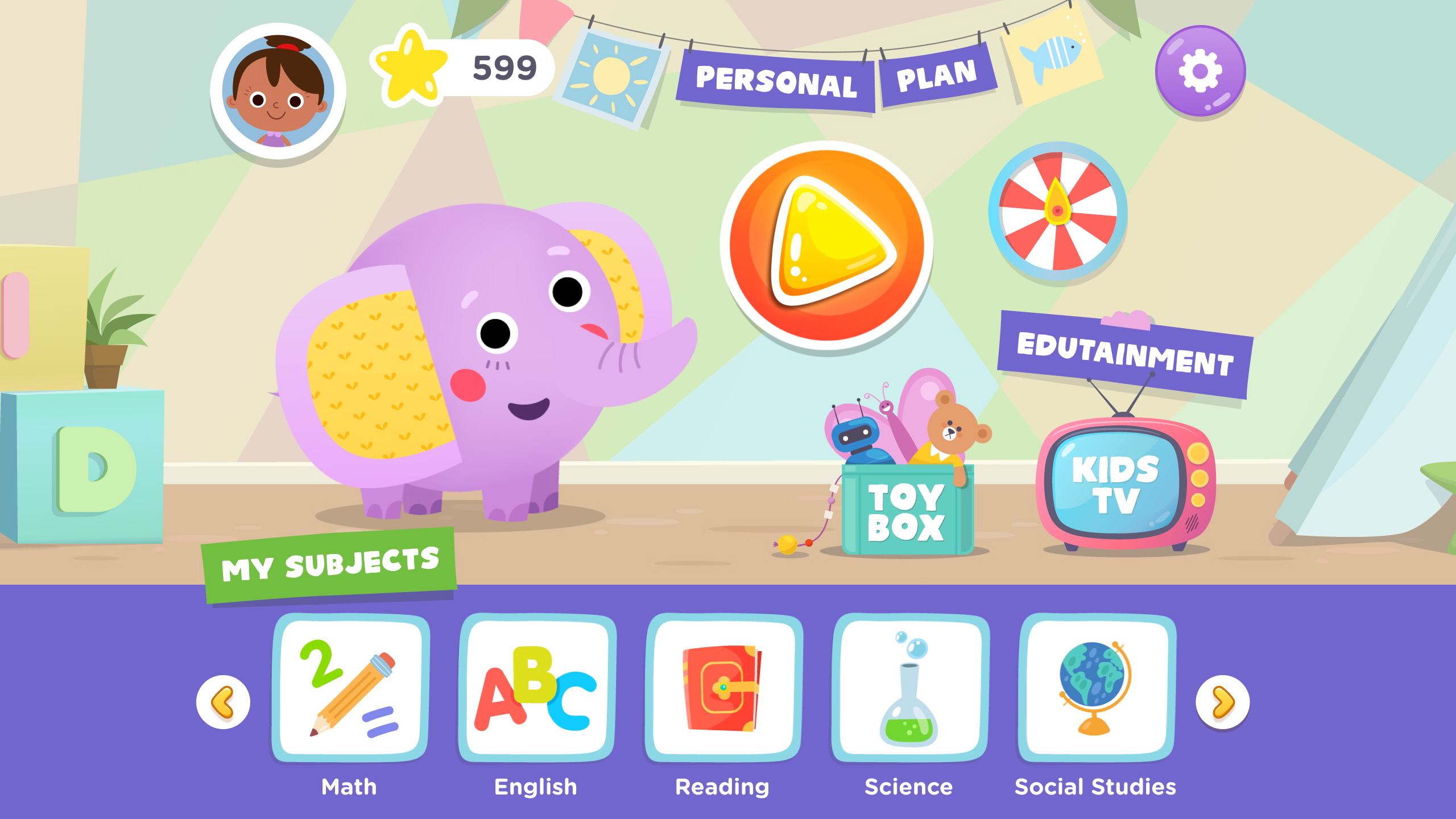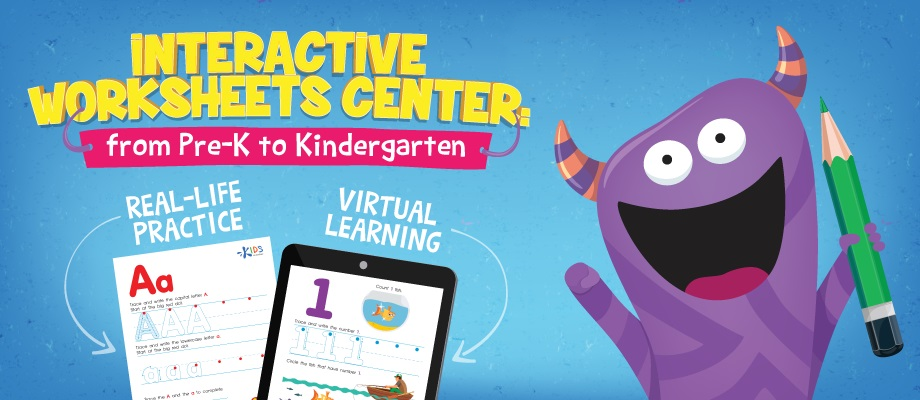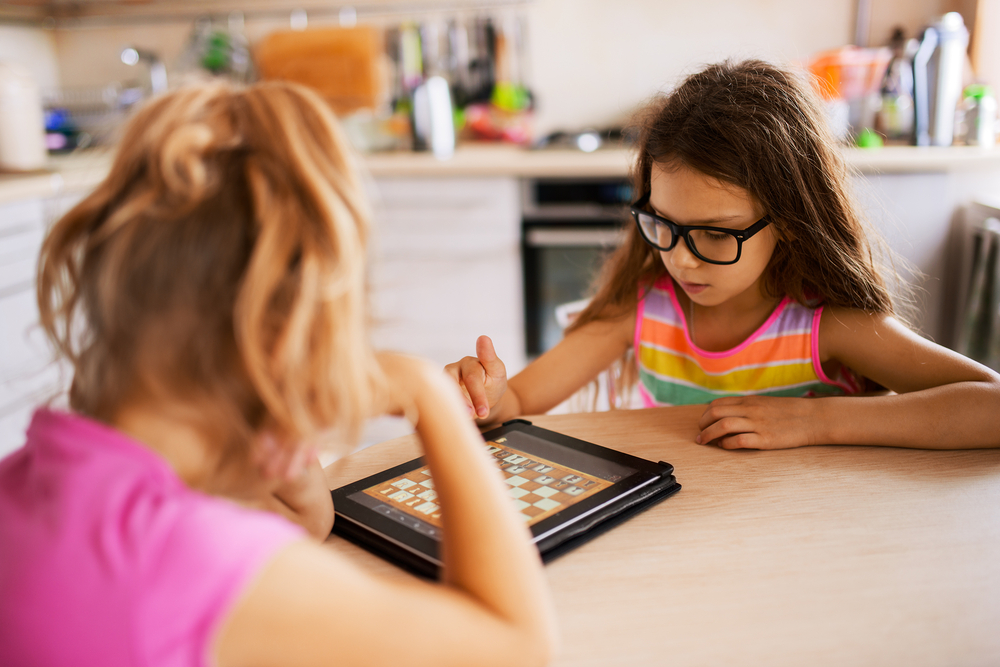Problem-Solving Skills Normal Chess Worksheets for Ages 5-7
6 filtered results
-
From - To
Discover the engaging "Problem-Solving Skills Normal Chess Worksheets" designed for ages 5-7 on Kids Academy! These fun and educational worksheets introduce young learners to the fundamentals of chess, enhancing their critical thinking, strategic planning, and problem-solving abilities. With colorful illustrations and age-appropriate challenges, children will enjoy developing their cognitive skills while mastering the game. Perfect for beginners, these worksheets foster patience, concentration, and logical reasoning. Ideal for parents and educators aiming to make learning both enjoyable and impactful, visit Kids Academy today and set your child on the path to becoming a young chess master!
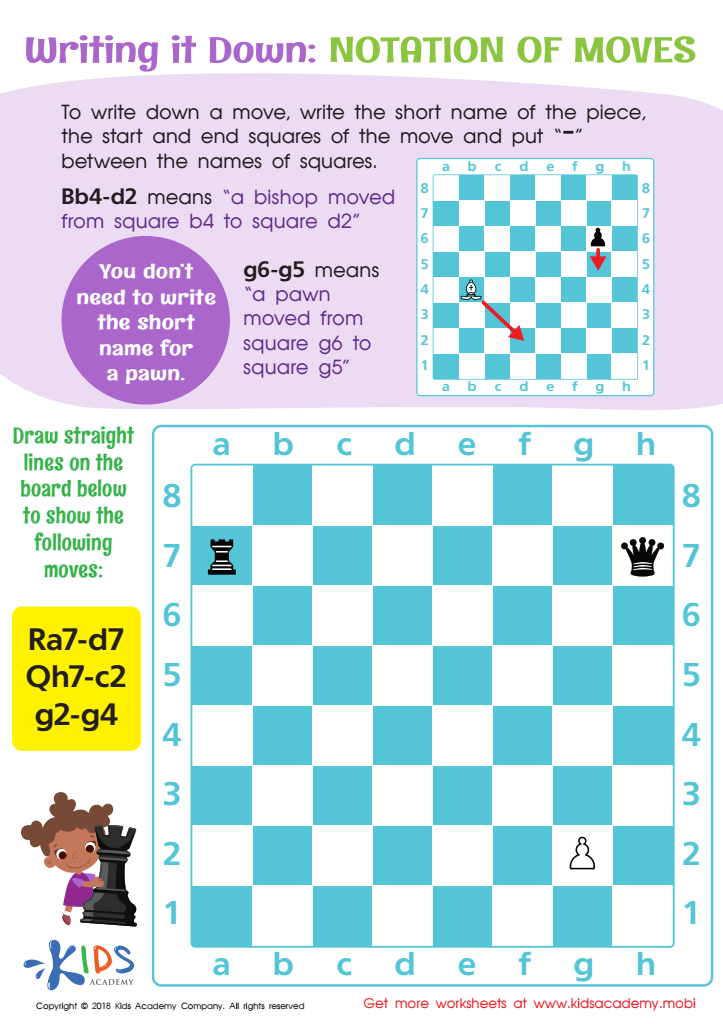

Notation of Moves Writing it Down Worksheet
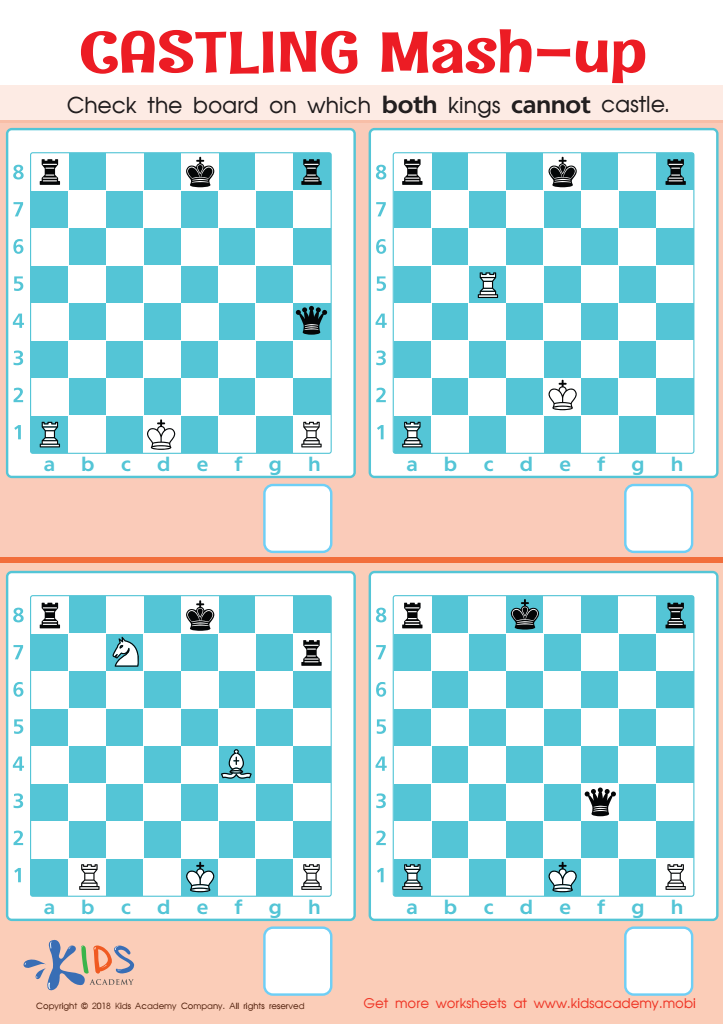

Castling Mash–up Worksheet
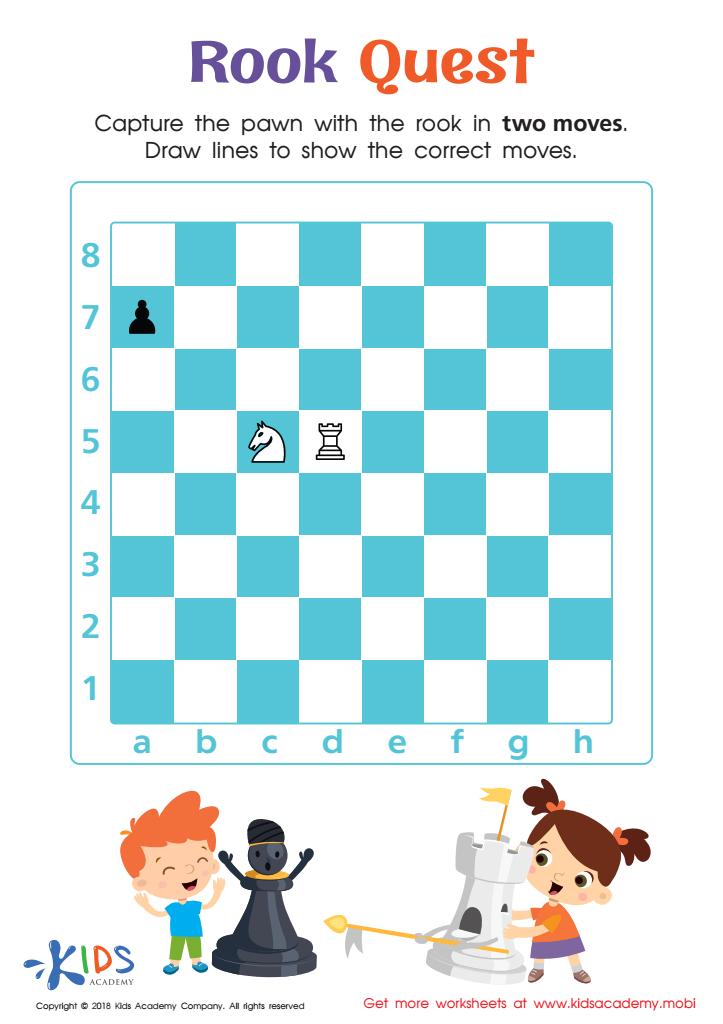

Rook Quest Worksheet
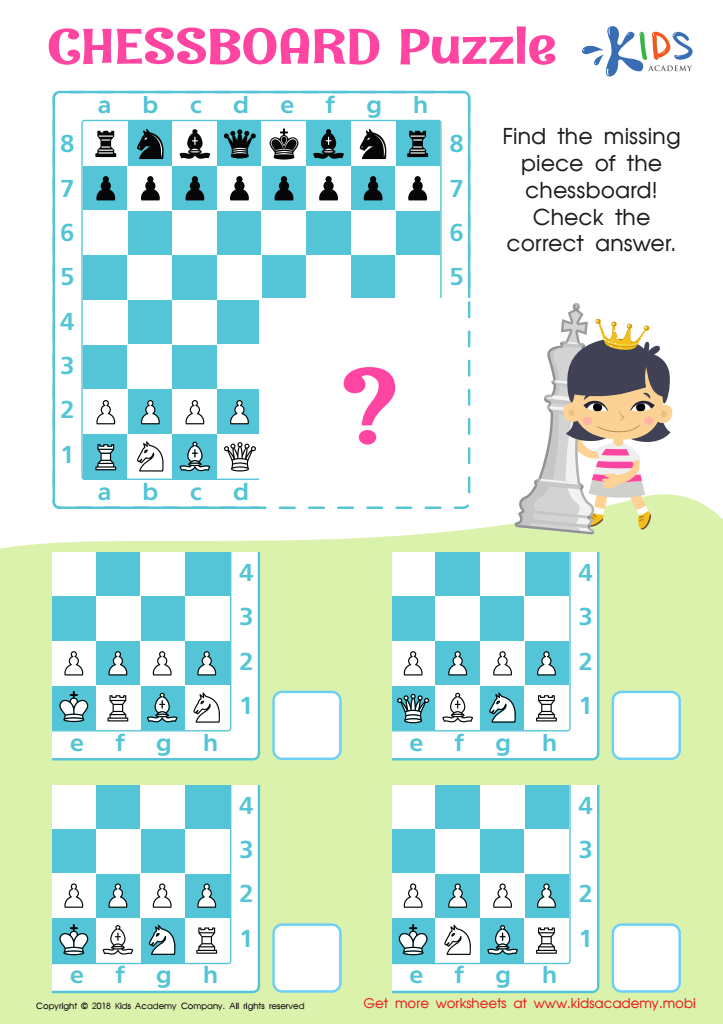

Chessboard Puzzle Worksheet
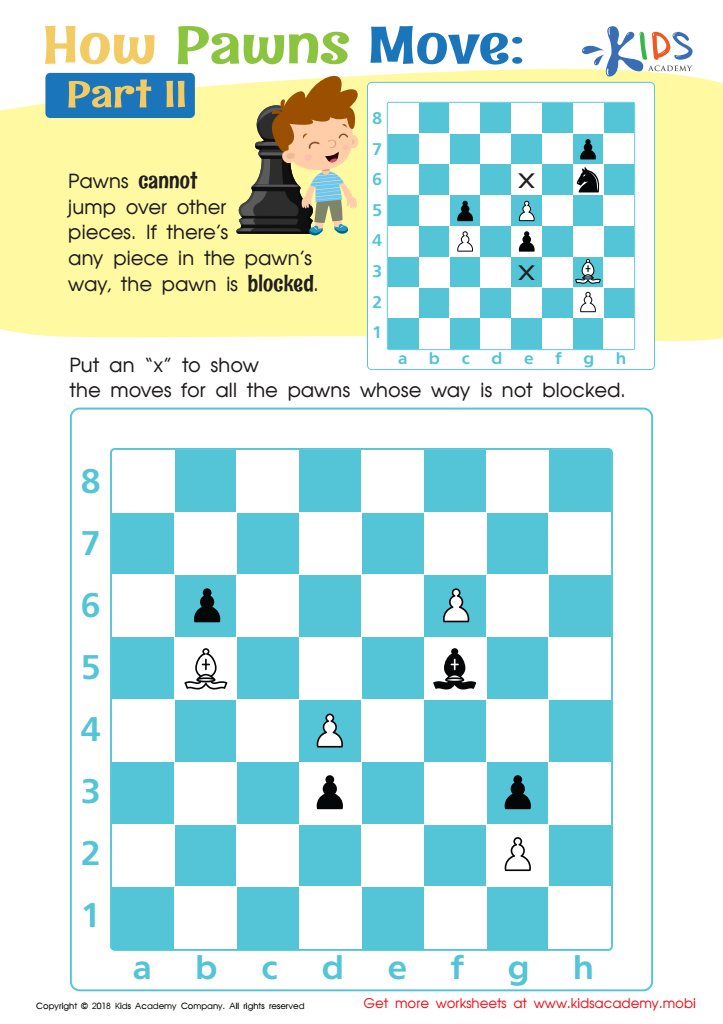

How Pawns Move: Part II Worksheet
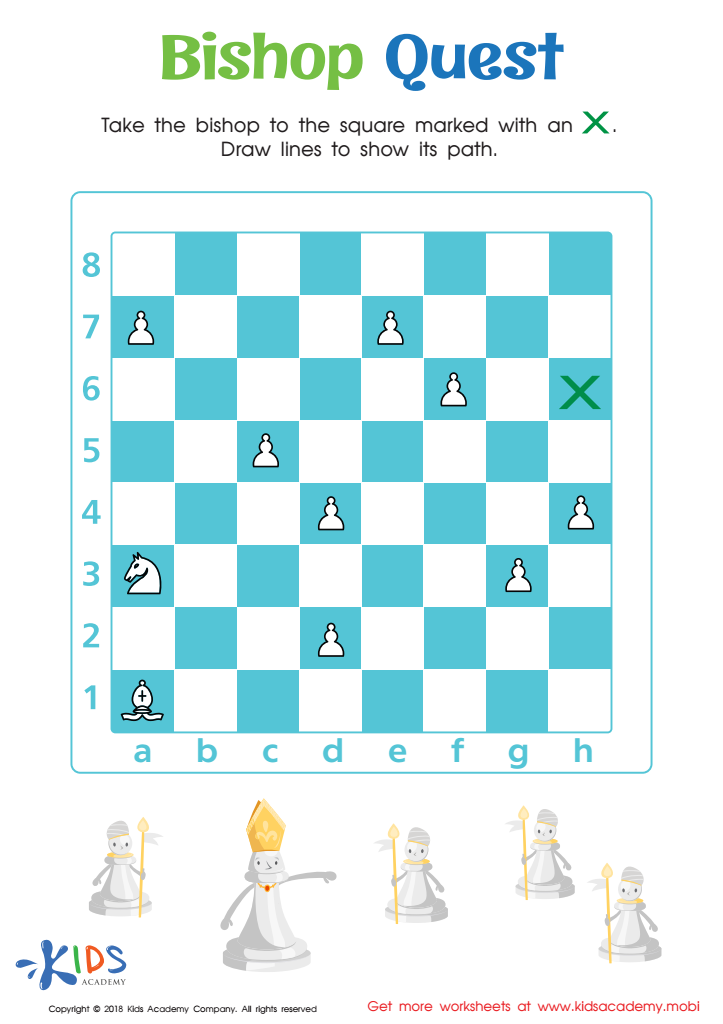

Bishop Quest Worksheet
Introducing children aged 5-7 to problem-solving skills through Normal Chess can have a profound impact on their cognitive development and overall growth. Though chess may seem complex, breaking it down into simpler concepts makes it accessible and advantageous for young minds.
Firstly, problem-solving skills are foundational for academic success in various subjects, including mathematics and reading comprehension. Chess encourages strategic thinking and helps children understand the importance of planning ahead and considering multiple outcomes before making a move. These critical thinking skills can be transferred to classroom settings and everyday situations.
Moreover, chess helps improve concentration and focus. Young children often have shorter attention spans, but engaging in a captivating game teaches them to concentrate on the task at hand and think critically about each step they take.
Additionally, playing chess fosters creativity and imagination. Children learn to visualize moves and outcomes, enhancing their capacity for creative problem solving. It also promotes patience and discipline, as understanding the game and planning effective strategies require practice and rigor.
Lastly, chess encourages social interaction and communication when played with peers or family members. It can teach valuable life skills such as turn-taking, empathy in considering an opponent’s perspective, and resilience in facing both victory and defeat gracefully.
Overall, incorporating chess into early education creates a well-rounded developmental environment for young learners.

 Assign to My Students
Assign to My Students




